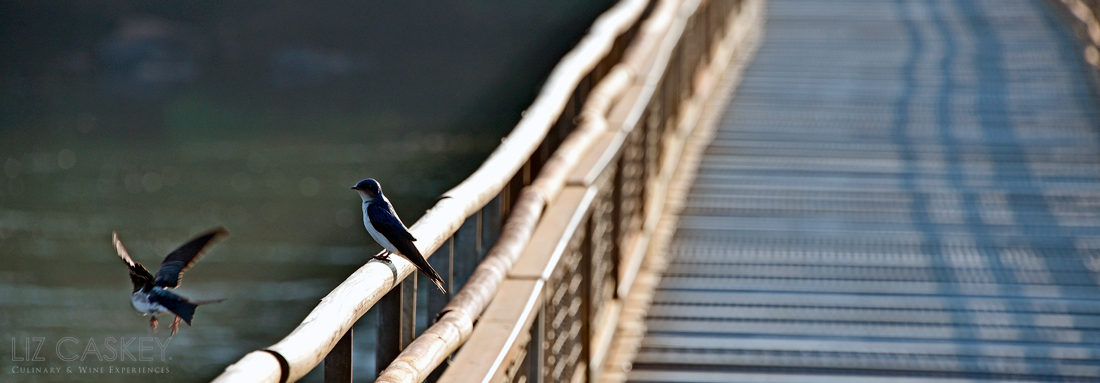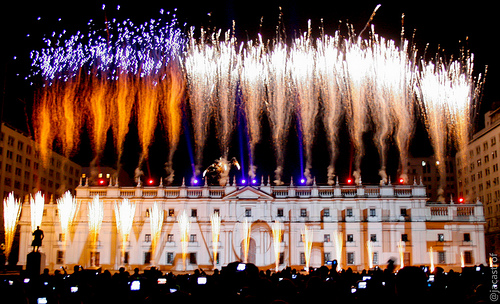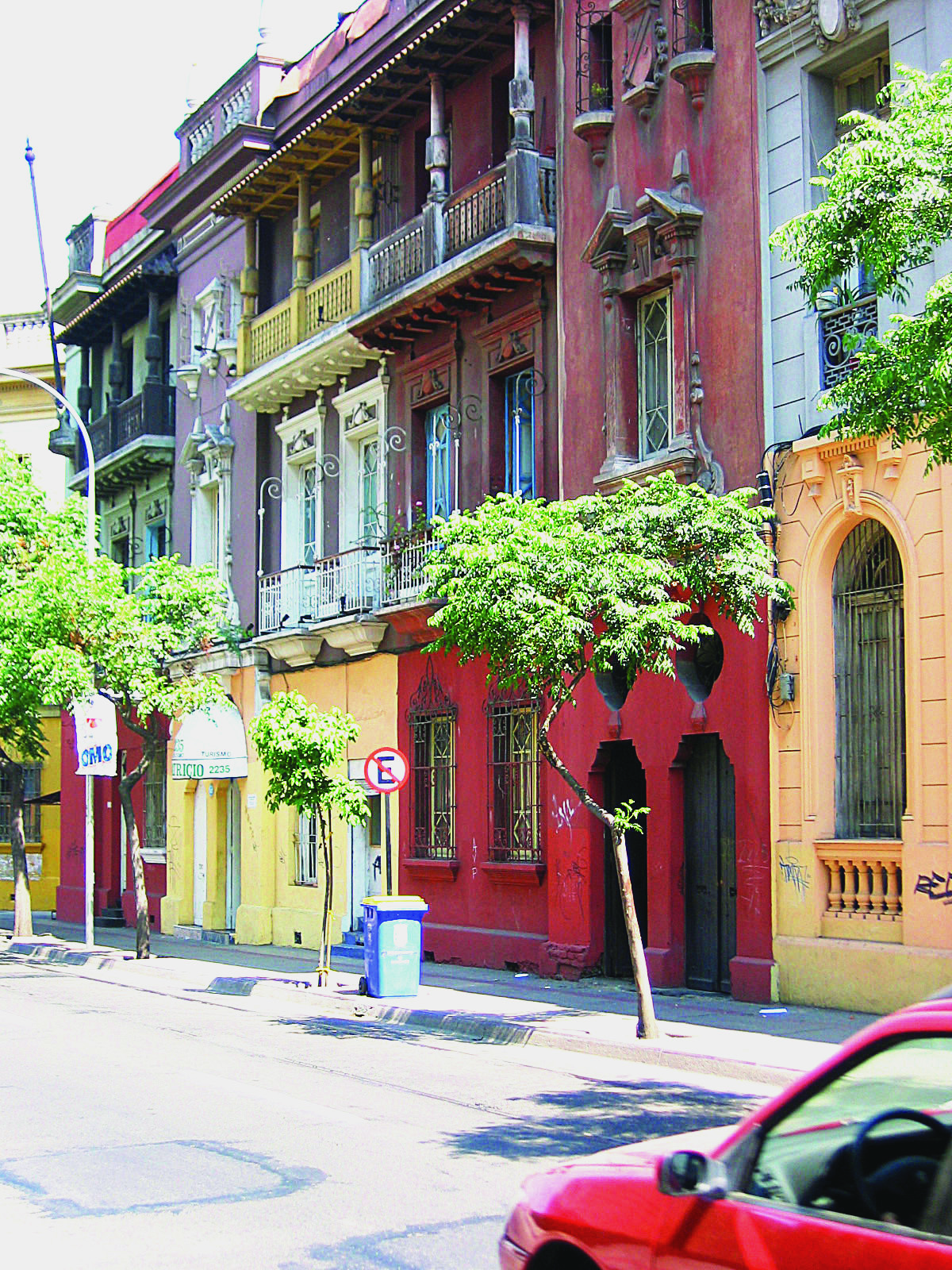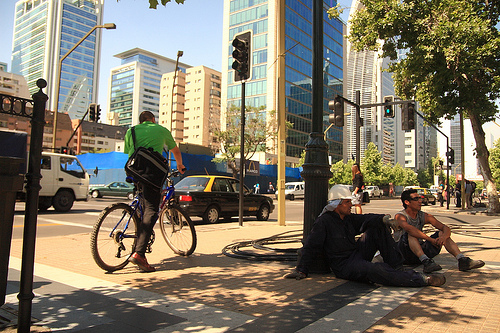Viva Santiago! Yay! Way to kick off the year, Chile.
It filled my heart with joy on Sunday morning when I opened, okay clicked, the New York Times travel section to find my hometown holding down the lead spot of, “41 Places to Go in 2011”. Santiago described as vibrant, effervescent, culturally flourishing, modern, safe, sophisticated, great infrastructure, cutting edge, and (drum roll), an up-and-coming food and wine destination. That about sums up the vibe—to start.
Honestly, this piece really resonates with what we’ve been feeling here, and hearing from all our clients traveling in Chile. They come curious, leave enchanted and inspired. They want to return—many to travel more, many with the idea of living here or learning Spanish for a while. Chile feels so seductively liveable. Like California meets Spain but totally New World. There’s just something about this place. Who am I to talk? This month, I am celebrating one decade of living in Chile. It feels like I just arrived yesterday.
As people finally tune into the charms of Santiago, it IS a city of colorful neighborhoods that need to walked, savored, and discovered like a long dinner. Not a woof-it-down-in-the-car type city tour on a stopover between Easter Island and San Pedro de Atacama. No señor. It’s about diving in to discover Santiago’s soul, attitude, character, culture, and depths. To help you all start your navigation of this divine, happening capital so dear to my heart, I thought I would start by laying out the main neighborhoods of the compact area. Over the next couple months on Eat Wine, I dive into each of them with some obligatory stops to catch their onda, yummy restaurants, cute cafés, hip bars, boutiques, you get the drift.
Seriously, if you’re feeling the itch to get down here to Santiago, by all means, scratch it. Now is THE time. What else can I say?
Downtown/Centro: Civic, Barrio Brasil, Bellas Artes & Lastarria
The Downtown area of Santiago is the historical and cultural heart of the city. From Monday to Friday, it throbs and pulsates with office and government workers, and then it falls quiet on the weekends when families stroll along its pleasant pedestrian paseos and visit its numerous galleries. For me, Santiago Centro is the very soul of the city, the place where its identity was born. From the Plaza de Armas, where conquistador Pedro de Valdivia laid out the city center in 1541, history radiates and permeates every block of the Centro. The modest Casa Colorada, a colonial home which is now a museum, is easy to overlook with all the grand, European-inspired buildings that surround it. You can’t miss La Moneda, the elegant neo-classical presidential palace which is guarded by smartly uniformed soldiers. This building was bombed by Pinochet’s forces in 1973. The impressive Judicial Courts and the unique, Y-shaped Bolsa, Stock Exchange, are beautiful historical buildings that serve today’s lawyers and businessmen. The sea of humanity that flows through the major pedestrian avenues Huérfanos and Ahumada imbue the Centro with vibrancy, life and character. Bustling cafés invite you to sit, savor a cortado and watch the action. Men shine shoes and retired folks play chess. Uniformed school children beg their nanas (nannies) for pesos to buy un helado, an ice cream. There’s an occasional political protest. Time-worn yet timeless, this is my favorite part of the city. If for any reason I no longer live in Santiago, although I don’t know why, this is the area I will miss the most… the area that will make me ache to the bone with homesickness.
Make time to saunter along the streets of Barrio Brasil, a bohemian neighborhood populated with youth, hipsters and Peruvian immigrants. The buildings have an aura of by-gone and now-faded elegance. Pass the metal workshops, garages and little shops that seem to sell nothing but candy and soda. Dogs that don’t seem to belong to anyone, but are cared for everyone doze in the shadows on the shady side of the street. Men ride bicycle carts loaded with cardboard that will be recycled. The pace is slower here, but the neighborhood is being rejuvenated. Young artists and professionals are renovating the once-grand, turn-of-the-century homes with the beautiful leaded windows and ironwork grills into lofts and apartments. More and more, the gray cobblestone streets are punctuated with bright colors like coral pink, goldenrod yellow and grass green. This area of Santiago exudes the very essence of a Latin American city. It is residential, quiet, and perhaps a little edgy as you get closer to the Alameda. The area extends down to the impressive Quinta Normal Park through the Barrio Yungay, where there are also many beautiful streets with remodeled architecture dating back to the 1920s.
East of the city center, you will find Cerro Santa Lucía, possibly Santiago’s most distinctive and memorable landmark. It was on this very site that Pedra de Valdivia founded Santiago in 1541. Late in the 19th century, the hill (cerro) was transformed– with a baroque maze of pathways, terraces, fountains and plazas– into the public park which it is today. Here are the areas known as Lastarria and Bellas Artes, a joint neighborhood that boasts not only Cerro Santa Lucía, but also the belle époque landmark Bellas Artes Museum and the romantic Parque Forestal. Reminiscent of the Bois de Boulogne, the gracious park features gravel pathways, antique lamp posts and the Fuente Alemana. Is it any wonder that this area of the city is the most happening part of Santiago? Restaurants and outdoor cafés, boutiques and antique flea markets, art galleries and cinemas imbue the quarter with a suave, cosmopolitan, intellectual atmosphere. Elegant, European-style apartment houses line the shady streets. A traditional barrio, but hip and cutting-edge at the same time, Lastarria is home to young couples, old-time residents, the gay community and international visitors. And okay, this is my hood. I am in love with it and everything morning when I gaze towards San Cristóbal over the green of the park, I give thanks and pinch myself for living here.
Bellavista & Patronato
Cross the Mapocho River north towards La Vega at Recoleta Avenue, then east, and you wander into the warren of tiny shops and stores and kiosks and restaurants that is Patronato. This is Santiago’s garment district, where claustrophobic streets are packed to the hat brim with every cheap fashion accessory you can imagine. Clothing, handbags, pantyhose and belts: here you can find the latest trend at the lowest cost. The quality of the goods is fairly basic, but they more than make up for it with the wide selection.
Middle Eastern immigrants, primarily from Syria and Palestine, first settled here in the 1920s. Although many of those families have since moved to other areas of town, their businesses are still based here as are their ethnic restaurants and specialty shops. Today, contributing to cacophony of languages and music, colors and smells, is a new wave of Korean immigrants who have opened a plethora of Asian supermarkets and Korean restaurants. Ahh, breathe deep and smell the garlic. Patronato is an interesting study in Chile’s immigrant communities for sure.
To the east of Calle Loreto, which crosses over the bridge from the Bellas Artes Museum, lies Santiago’s quintessential bohemian quarter, Bellavista. Nestled at the foot of the towering San Cristóbal hill and under the watchful gaze of the 14-meter tall (about 46 feet) Virgin Mary, this is also the beginning of the sprawling Metropolitan Park which encompasses the entire hill. In the past, you could ride a teleférico (cable car) to the summit of the hill for a splendid view of Santiago (on a clear day) or a lot of smog (on a not-so-clear day), although this service has been suspended temporarily. If you are interested in taking a piece of lapis lazuli jewelry home with you (lapis lazuli is only found in Chile and Afghanistan), this is the place to shop. Bellavista’s streets are full of colorful and fanciful facades, many of them home to restaurants, artist ateliers, theaters, and cafés, particularly surrounding Calle Constitución with Patio Bellavista. In a neighborhood noted for its unique architecture, the home of Nobel Poet Pablo Neruda, La Chascona, stands out. A ship-like dwelling that seems to be an organic extension of the hillside, it is open to the public. In the evening, Bellavista comes to life as Party Central. Trendy bars, snazzy nightclubs, and chill lounges throb and vibrate as pleasure-seekers descend upon the area for an evening of eclectic food, imaginative drinks and innovative music, much of it live.
Providencia & Ñuñoa
Heading east toward the cordillera, the spine of the Andes Mountains, the main artery called The Alameda becomes known as Avenida Providencia. Centrally located, Providencia is bordered by Tobalaba to the east and Plaza Italia to the west. In the 1920s, this was countryside, and this was Santiago’s first suburb. Today, many of the large old European-style mansions from the 1940s and 50s have been converted into restaurants and hotels. Many more were demolished to make way for the high-rise apartment and office buildings. Indeed, Providencia is home to a large upper middle class population and a substantial portion of the city’s commerce. Except for Sunday afternoons, the neighborhood is a bustling beehive of activity. It is an excellent base for exploring the city since everything from delightful cafés to fascinating one-of-a-kind shops to the Metro are all close at hand.
Make some time to walk through the delightful park, Parque Bustamente, surrounded by cobblestone streets and majestic plátanos orientales trees, originally brought from Mendoza. Admire the grand buildings built in the early 1900s. Also up-and-coming is the neighborhood around Avenida Italia, in the southern end of Providencia bordering on Francisco Bilbao. Here, for the antique enthusiast, it’s perfect to go searching for that special ítem. The neighborhood is also a hot spot for contemporary artists who have their ateliers along José Manuel Infante.
Ñuñoa is south and east from Providencia. Primarily a quiet, pretty residential area with neat houses and clipped lawns, it converges on the Plaza Ñuñoa, which has become a city nucleus for going out with the numerous bars and eateries that line its borders.
El Golf, Las Condes, & Vitacura
Part of the Las Condes district but a whole entity in and unto itself, El Golf is Santiago’s financial and corporate center—and a very posh residential neighborhood as well. As Avenida Providencia continues east, it widens and the name changes to Avenida Apoquindo. Not at all a traditional barrio, the broad, tree-lined boulevard is flanked on either side by strikingly modern skyscrapers. Locals refer to it as “Sanhattan”. Indeed, the smoked glass and steel towers do define the aesthetic of El Golf. There’s a building that is reminiscent of the Chrysler Building. Another is sheathed in a “skin” of vegetation, an eye-catching vertical greenhouse with foliage that changes color with the seasons.
El Golf has a high ratio of inspirational restaurants, exclusive boutiques and swanky hotels like The Ritz and W, all within walking distance of the Metro. Much as the elegant mansions from an earlier age are dwarfed by the soaring mirror-clad towers, so it may seem that today’s shameless consumerism drowns out the gracious past. And yet, there is an undeniable appeal here. If you want to discover the allure of the neighborhood, cross Apoquindo and wander down Gertrudis Echeñique towards Presidente Errazuriz. Get lost on those shady, safe, charming residential streets that capture the spirit of the neighborhood with their majestic European facades and well-tended gardens.
Farther out, Las Condes is officially the burbs. The Metro does reach out to Los Dominicos although to effectively get around you need a car (best option), taxi, bus, or bike. Forget walking: the distances are inhuman. Las Condes is residential and oriented for dwellers’ convenience: supermarkets, malls, corner pharmacies, big-box stores… you get the picture. For many, the appeal of Las Condes is for family living and space in the form of a home with a yard. For the visitor, Las Condes may be limited to a visit to the pretty Los Dominicos craft fair on the old convent grounds or a run to Parque Arauco, a large North American-style shopping mall with a multiplex cinema, designer boutiques and department stores.
Vitacura is upscale and fashionable, and a quiet and leafy residential district home to Santiago’s moneyed elite. The area of Vitacura between the chic Alonso de Córdoba, a Santiaguino version of Rodeo Drive, and Americo Vespucio is rife with art galleries, interior design and furniture stores, exclusive clothing boutiques, jewelers, and cookery stores. Not to name-drop, but… Louis Vuitton, Armani, Hermès… In recent years the vicinity of Nueva Costanera and El Mañío has experienced a sort of gastronomic boom, and there are heaps of exciting and gorgeous new restaurants with exciting and gorgeous patrons like La Mar, Tierra Noble, and Ox to start. You can also take long jogs or walks in the gorgeous Parque Bicentenario, Bicentennial park, that cuts to the north side of Vitacura along the Mapocho with sweeping views of Cerro Manquehue and the Andes to the east.
Enjoy Santiago. It’s laid back vibe, green spaces, friendly peeps, vistas of the mountains, and freakishly amazing Mediterranean climate (not unlike Santa Barbara in California) will have you hooked. That’s actually a good thing.
Thanks to Diego Martin for his pic of El Golf ; Isiás Fomite; Javíer Andrés Castro for capturing Bicentennial fireworks at La Moneda,
















